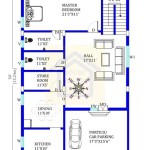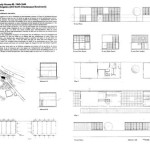Emergency Response Plan Examples in Alberta: A Comprehensive Overview
Alberta, with its diverse industries and varied geographical landscape, requires robust emergency response plans (ERPs) to mitigate the impact of unexpected events. These plans are critical for ensuring the safety of people, protecting property, and minimizing environmental damage. This article provides an overview of emergency response plan examples relevant to Alberta, highlighting key components and considerations.
An effective ERP is a dynamic document that outlines procedures for responding to a wide range of emergencies. These emergencies can include, but are not limited to, natural disasters like wildfires, floods, and severe weather events; industrial accidents such as chemical spills and explosions; public health emergencies; and security threats. The specific content and structure of an ERP will vary depending on the organization, its activities, and the potential hazards it faces.
The development and implementation of an ERP involve several crucial steps: risk assessment, plan development, training and exercises, and ongoing review and maintenance. A thorough risk assessment identifies potential hazards, evaluates their likelihood and potential impact, and determines the resources needed to respond effectively. Based on the risk assessment, the ERP is developed, outlining specific procedures, roles, and responsibilities. Regular training and exercises are essential for ensuring that personnel are familiar with the plan and can effectively implement it in a real emergency. Finally, the ERP should be reviewed and updated periodically to reflect changes in the organization, its environment, and best practices.
Key Point 1: Industry-Specific Emergency Response Plans
Alberta's economy is heavily reliant on the oil and gas industry, and therefore, specialized ERPs are crucial for this sector. These plans address the unique hazards associated with exploration, extraction, processing, and transportation of hydrocarbons. Examples include:
Upstream Oil and Gas ERPs: These plans focus on incidents at drilling and production sites, such as well blowouts, pipeline leaks, and equipment malfunctions. They detail procedures for containing the incident, protecting personnel, and minimizing environmental impact. Considerations include the proximity to communities, sensitive ecosystems, and water bodies. Communication protocols are emphasized to ensure rapid notification of regulatory agencies and affected stakeholders. Specialized equipment, such as spill containment booms and heavy machinery, is often pre-positioned at strategic locations.
Midstream Oil and Gas ERPs: These plans address emergencies related to pipelines and storage facilities. Pipeline ruptures, storage tank leaks, and compression station failures are potential scenarios. The plans outline procedures for shutting down pipelines, isolating leaks, and preventing the spread of contaminants. Geographic Information Systems (GIS) are often used to map pipeline routes, identify vulnerable areas, and facilitate emergency response. Coordination with local emergency services is essential, particularly in densely populated or environmentally sensitive areas.
Downstream Oil and Gas ERPs: These plans focus on refineries and petrochemical plants, where the risk of fire, explosion, and chemical release is significant. They detail procedures for process unit shutdowns, fire suppression, and evacuation. Hazard assessments, such as Process Hazard Analysis (PHA) and Layers of Protection Analysis (LOPA), are used to identify potential hazards and implement safety controls. Emergency response teams are trained in specialized skills, such as firefighting, hazardous materials handling, and rescue operations.
Beyond oil and gas, other industries in Alberta also require tailored ERPs. For instance, the agriculture sector needs plans to address livestock disease outbreaks, crop failures, and extreme weather events. The forestry sector requires plans to address wildfires, logging accidents, and transportation incidents. These industry-specific ERPs reflect the unique risks and challenges faced by each sector.
Key Point 2: Community-Based Emergency Response Plans
Community-based ERPs are essential for protecting residents and infrastructure during large-scale emergencies. These plans involve collaboration between municipal governments, emergency services, community organizations, and residents. Examples include:
Municipal Emergency Plans: These plans outline the responsibilities of municipal government agencies during emergencies, such as providing shelter, coordinating evacuation, and restoring essential services. They address a wide range of potential hazards, including natural disasters, industrial accidents, and civil disturbances. The plans typically include procedures for activating the Emergency Operations Centre (EOC), which serves as the central coordination point for emergency response. Public communication is a key component, with procedures for disseminating information through various channels, such as radio, television, social media, and door-to-door notifications.
Evacuation Plans: These plans detail procedures for evacuating residents from areas threatened by emergencies, such as wildfires or floods. They identify evacuation routes, assembly points, and shelter locations. Transportation arrangements are made for residents who do not have their own vehicles. Special consideration is given to vulnerable populations, such as seniors, people with disabilities, and those who require medical assistance. Evacuation drills are conducted to familiarize residents with the procedures and ensure a smooth evacuation process.
Wildfire Evacuation Plans: Given Alberta's susceptibility to wildfires, these plans are particularly important. They outline specific procedures for evacuating communities threatened by wildfires, including pre-planned evacuation routes, community alerts, and reception centres. These plans focus on the rapid and safe evacuation of residents and coordinating with provincial wildland fire management agencies. They also address the needs of livestock and agricultural operations.
Flood Response Plans: Similarly, communities in flood-prone areas require specific flood response plans. These plans include measures for flood forecasting, warning systems, sandbagging, and evacuation. They also address post-flood recovery efforts, such as debris removal, infrastructure repair, and public health monitoring.
Community-based ERPs emphasize the importance of public awareness and preparedness. Residents are encouraged to develop their own personal emergency plans and assemble emergency kits. Public education campaigns are conducted to raise awareness of potential hazards and promote preparedness measures.
Key Point 3: The Role of Legislation and Regulatory Requirements
Various pieces of legislation and regulatory requirements in Alberta mandate the development and implementation of ERPs. These laws and regulations provide a framework for ensuring that organizations and communities are prepared to respond effectively to emergencies. Some key examples include:
The Emergency Management Act: This Act establishes the legal framework for emergency management in Alberta. It defines the roles and responsibilities of government agencies, municipalities, and individuals in preparing for, responding to, and recovering from emergencies. The Act requires municipalities to develop and maintain emergency management plans. It also authorizes the government to declare a state of local emergency or a provincial state of emergency, granting it additional powers to respond to the emergency.
The Occupational Health and Safety Act: This Act requires employers to provide a safe and healthy workplace for their employees. This includes developing and implementing ERPs to address potential hazards in the workplace. The ERP must be communicated to all employees, and regular training must be provided. Specific regulations address hazards such as confined spaces, hazardous materials, and fire safety.
The Environmental Protection and Enhancement Act: This Act aims to protect the environment from pollution and other forms of degradation. It requires companies handling hazardous substances to develop and implement ERPs to prevent and respond to spills and releases. The ERP must detail procedures for containing the spill, cleaning up the contamination, and restoring the environment. Companies are also required to report spills to the appropriate regulatory agencies.
The Alberta Energy Regulator (AER) regulations: The AER regulates the oil and gas industry in Alberta, and its regulations require companies to develop and implement ERPs for their operations. These plans must address a wide range of potential hazards, including well blowouts, pipeline leaks, and facility fires. The AER requires companies to conduct regular drills and exercises to test their ERPs. The AER also has the authority to inspect facilities and enforce compliance with its regulations.
Compliance with these legislative and regulatory requirements is essential for ensuring that organizations and communities are adequately prepared for emergencies. Failure to comply can result in penalties, fines, and legal action.
In addition to the aforementioned points, ERPs should also consider the following aspects:
Business Continuity Planning: This involves developing strategies to ensure that critical business functions can continue during and after an emergency. It includes identifying essential resources, backing up data, and establishing alternative work locations.
Crisis Communication: This involves developing a plan for communicating with stakeholders during an emergency. It includes identifying key messages, designating spokespersons, and using various communication channels.
Mental Health Support: Emergencies can have a significant impact on the mental health of individuals and communities. ERPs should include provisions for providing mental health support to those affected by the emergency.
Collaboration and Coordination: Effective emergency response requires collaboration and coordination between various organizations and agencies. ERPs should clearly define roles and responsibilities and establish procedures for communication and coordination.
Continuous Improvement: ERPs should be reviewed and updated regularly to reflect changes in the organization, its environment, and best practices. After each emergency, a post-incident review should be conducted to identify lessons learned and improve the ERP.
The examples and considerations outlined in this article provide a framework for developing and implementing effective emergency response plans in Alberta. These plans are essential for protecting people, property, and the environment from the impacts of unexpected events.

Ohs Resource Portal Emergency Response Planning Template Package

Ohs Resource Portal Emergency Response

Ohs Resource Portal Emergency Response Planning Checklist Template

Emergency Response Planning Alberta Hotel Lodging Association
Emergency Response On The Farm

Ohs Resource Portal Templates
Emergency Response On The Farm

Ohs Resource Portal Emergency Response

Federal Emergency Response Plan January 2024
Emergency Response On The Farm








